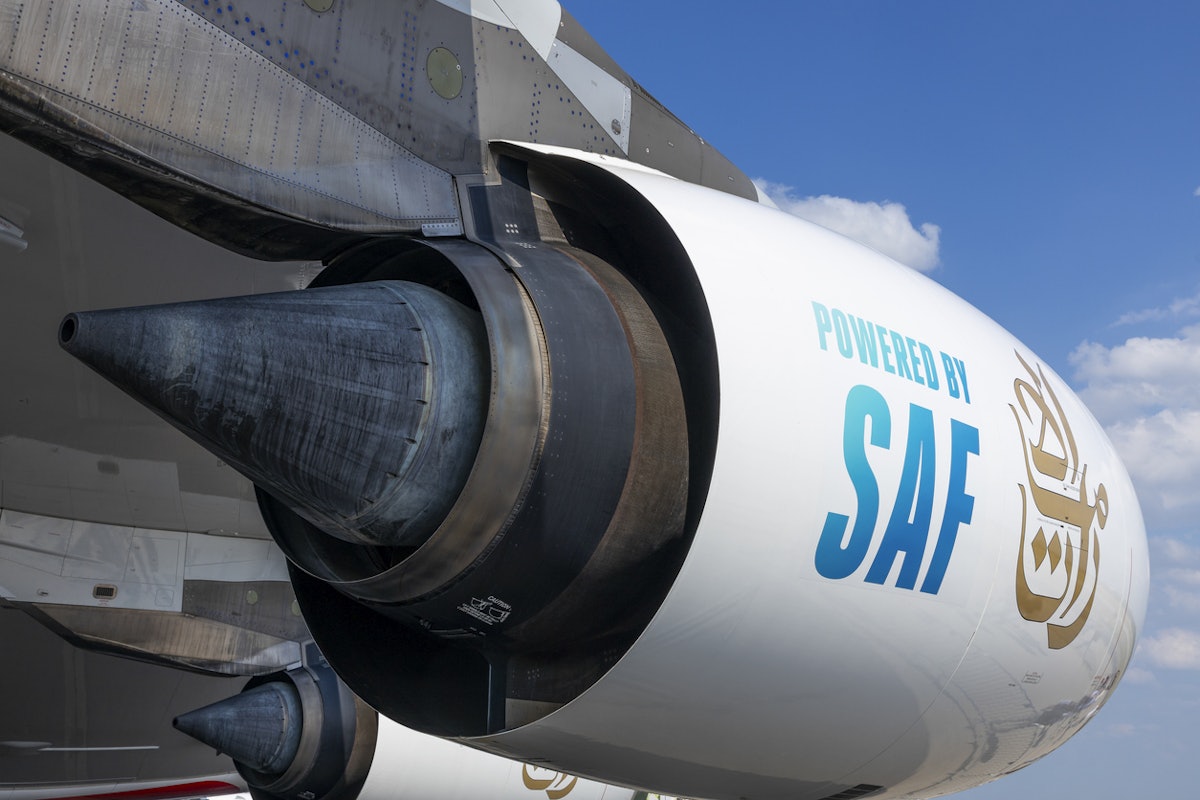The federal spending law passed in early July 2025, often called the One Big Beautiful Bill Act, significantly reduces federal funding for efforts to create renewable or sustainable types of fuel that can power aircraft over long distances while decreasing the damage aviation does to the global climate.
Aviation contributed about 2.5% of global carbon emissions in 2023. It’s particularly hard to reduce emissions from planes because there are few alternatives for large, portable quantities of energy-dense fuel. Electric batteries with enough energy to power an international flight, for instance, would be much larger and heavier than airplane fuel tanks.
One potential solution, which I work on as an aerospace engineer, is a category of fuel called “sustainable aviation fuel.” Unlike conventional jet fuel, which is refined from petroleum, sustainable aviation fuels are produced from renewable and waste resources — such as used cooking oil, agricultural leftovers, algae, sewage and trash. But they are similar enough to conventional jet fuels that they work in existing aircraft tanks and engines without any major modifications.
Prior to Donald Trump’s second term as president, the U.S. government had set some bold targets: by 2030, producing 3 billion gallons of this type of fuel every year, and by 2050, producing enough to fuel every U.S. commercial jet flight. But there’s a long journey ahead.
A range of source materials
The earliest efforts to create sustainable aviation fuels relied on food crops – turning corn into ethanol or soybean oil into biodiesel. The raw materials were readily available, but growing them competed with food production.
The next generation of biofuels are using nonfood sources such as algae, or agricultural waste such as manure or stalks from harvested corn. These don’t compete with food supplies. If processed efficiently, they also have the potential to emit less carbon: Algae absorb carbon dioxide during their growth, and using agricultural waste avoids its decomposition, which would release greenhouse gases.
But these biofuels are harder to produce and more expensive, in part because the technologies are new, and in part because there are not yet logistics systems in place to collect, transport and process large quantities of source material.
Some researchers are working to create biofuels with the help of genetically modified bacteria that convert specific raw materials into biofuel. In one method, algae are grown to produce sugars or oils, which are then fed to engineered bacteria that turn them into usable fuels, such as ethanol, butanol or alkanes. In another effort, photosynthetic microbes such as cyanobacteria are modified to directly convert sunlight and carbon dioxide into fuel.
All these approaches – and others being explored as well – aim to create sustainable, carbon-neutral alternatives to fossil fuels. Exciting as it sounds, most of this technology is still locked away in labs, not available in airports.
Blends are being tested
At present, the U.S. Federal Aviation Administration allows airlines to fuel their aircraft with blends of up to 50% sustainable aviation fuel, mixed with conventional jet fuel. The exact percentage depends on how the fuel was made, which relates to how chemically and physically similar it is to petroleum-based jet fuel, and therefore how well it will work in existing aircraft tanks, pipes and engines.
There are two major hurdles to wider adoption: cost and supply. Sustainable fuels are much more expensive than traditional jet fuel, with cost differences varying by process and raw material. For instance, the raw price of Jet-A, the most common petroleum-based aviation fuel, had a wholesale price averaging US$2.34 a gallon in 2024, but one type of sustainable fuel wholesaled at about $5.20 a gallon that year.
The federal budget enacted in July 2025 reduces government subsidies, effectively raising the cost of making these fuels.
In part because of cost, sustainable fuel is produced only in small quantities: In 2025, global production is expected to be about 2 million metric tons of the fuel, which is less than 1% of the worldwide demand for aviation fuel. There is international pressure to increase demand – starting in January 2025, all jet fuel supplied at airports in the European Union must include at least 2% sustainable fuel, with minimum percentages increasing over time.
Planes can use these fuels
Companies such as General Electric and Rolls-Royce have shown that the jet engines they manufacture can run perfectly on sustainable fuels.
However, sustainable aviation fuels can have slightly different density and energy content from standard jet fuel. That means the aircraft’s weight distribution and flight range could change.
And other parts of the aircraft also have to be compatible, such as those that store, pump and maintain the balance of the fuel. That includes valves, pipes and rubber seals. As a visiting professor at Boeing in the summer of 2024, I learned that it and other aircraft manufacturers are working closely with their suppliers to ensure sustainable aviation fuels can be safely and reliably integrated into every part of the aircraft.
Those finer details are why headlines you may have seen about flights that burn “100% sustainable aviation fuel” are not quite the full story. Usually, the fuel on those flights contains a small amount of conventional jet fuel or special additives. That’s because sustainable fuels lack some of the aromatic chemical compounds found in fossil-based fuels that are required to maintain proper seals throughout the aircraft’s fuel system.
Good promise, with work ahead
While many details remain, sustainable aviation fuels offer a promising way to reduce the carbon footprint of air travel without reinventing or redesigning entire airplanes. These fuels can significantly cut carbon dioxide emissions from aircraft in use today, helping reduce the severity of climate change.
The work will take research, and investment from governments, manufacturers and airlines around the world, whether or not the U.S. is involved. But one day, the fuel powering your flight could be much greener than it is now.

